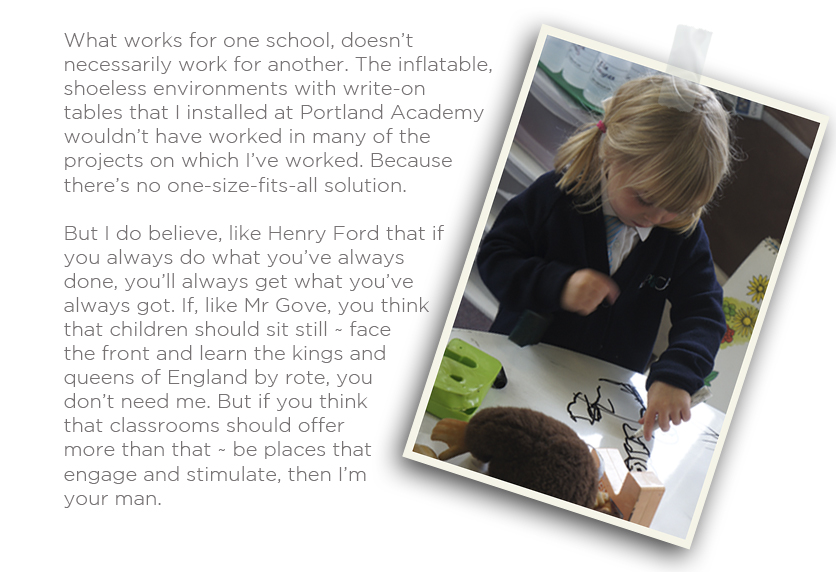Environments matter
Some schools have discovered it already. Early sponsored academies, pockets bulging with cash, could hardly fail to discover it (although many squandered that opportunity). Companies, by contrast, have known it for years. I too start with the fundamental belief that environments affect outcomes: yet so many schools have still to discover the impact that having the right environment can have on teaching and learning.
This isn’t talking about fancy new buildings. In fact, one of the loveliest examples I’ve come across is from Greg Miyanaga. Greg won the Canadian Prime Minister's Award for Excellence in Teaching, and in his blog (there's a link from this page), he describes using a $4 net curtain from Ikea. Projecting an image of a gingerbread house onto it, his primary school children standing behind the curtain found themselves inhabiting a virtual Grimms world.
Really understanding the subject ...
When I was at Isis, I wrote Learning Journeys to document trends in designing learning spaces. Whilst the popular press have fuelled the fire – shrieking that small class sizes are the holy grail, heads such as Chris Gerry at New Line Learning Academy in Maidstone built 120-student super classes and saw exam results soar.
... makes you smile
But both solutions can be right for the right school and my job as a designer is to understand a school’s challenge and determine how furniture and the environment in which it sits can affect this. It’s not about asking what colour chair you want or whether you want arms on it. It’s about asking the questions behind that, which determine whether you even need chairs (you probably do, so don’t worry that I’ll suggest something completely off the wall!). And above all, and taking one great piece of advice I received when I studied for my degree (and for it, thank you Colin): good design should always make you smile.
